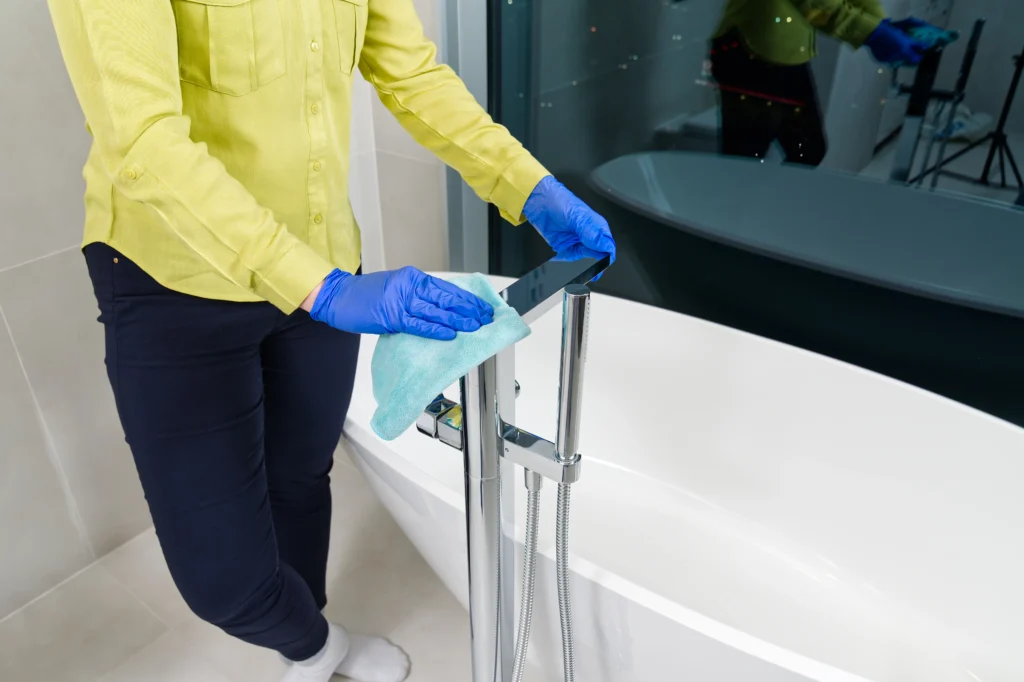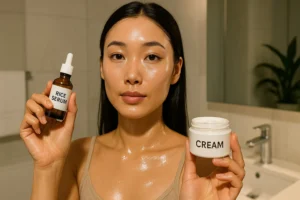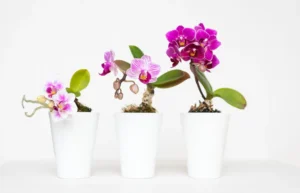
If you think that your toilet is ashamed of its own interior, your bathtub looks like the background of an anti -limescale commercial and your sink could easily get a role in the next episode of CSI: Bathroom, then left consular: the fault lies with hard water. And no, this is not an exotic phenomenon that afflicts only old buildings and poor hydraulic systems. Up to 85% of families have to do with hard water, or water that contains a large amount of dissolved minerals, mainly calcium and magnesium.
These mineral residues – limestone – they tend to “settle” on wet surfaces, where over time they leave white spots, yellow halos and unsightly edges, which do not represent only an aesthetic problem, but can also damage the long -term surfaces. And the worst thing is that the classic detergents and brushes seem to work as motivational words: many promises, few effects. Fortunately, there are more natural but effective alternatives that do not ruin the sanitary ware of your bathroom and your health.
With some home makeup and a pinch of perseverance, your bathroom will be able to breathe again, without aggressive chemicals.
How to face limestone – surface surface
The toilet: a natural weapon against mineral deposits
If you want to look inside cups of the toilet if you think that there is a kind of limestone mummy there, you are not the only ones. That obstinate halo around the floating line is actually the result of the continuous accumulation of minerals from hard water. And no, a fuck for classic toilet does not have much to say in this case.


Instead of aggressive chemical detergents, you can try Natural solution with lemon juice and boric acid (which is delicate on ceramic but ruthless on limestone). The procedure is simple:
- Mix it 1/2 cup of freshly squeezed lemon juice con 1 tablespoon of boric acid – Borace (available in the pharmacy).
- Apply the mixture directly to the stains.
- Let it work. by 20 to 30 minutes. Citric acid dissolves calcium deposits, while boric acid has antibacterial properties.
- Then rub with a brush and rinse. Repeat if necessary.
If you are a fan of the “old school” solution, you can also use vinegar vinegar and baking soda – Pour 1 cup of vinegar into the sink, leave for 10 minutes, then add 1/2 cup of sodium bicarbonate and after another 10 minutes, rub and rinse.
Bathtub: vinegar that works if you let it breathe
The bathtub, especially if in acrylic or enameled, is sensitive to more aggressive abrasive detergents. The safest (and very effective) solution is combined vinegar with dishes for dishes.


Processes:
- In a spray bottle, mix:
- 1 cup of white vinegar
- 1 cup of warm water
- 1 teaspoon of detergent for delicate dishes (for example organic liquid detergent)
- Spray the solution on the entire surface of the stains (especially around the exhaust and the edges).
- Leave to act for at least 20 minutes – longer for thick coatings.
- Then, use a soft sponge or a non -abrasive brush to rub the surface with circular movements.
- Rinse with water and dry with a dry cloth.
Vinegar melts the mineral salts and the detergent allows the mixture to better adhere to the vertical surfaces. If the stains persist, try the same procedure by adding sodium bicarbonate: sprinkle it on the tub and then spray with the mixture.
Sink and tap: sodium bicarbonate, vinegar and paper napkins
The sink is a real magnet for the drops which, if they are not controlled, quickly transform into white spots or even rough patinas. The key? Combination of delicate alkaline abrasiveness and acid reaction.
See also




Cleaning instructions:
- Sprinkle on dry stains baking soda or borax (the latter to be used with gloves).
- Spray with a mixture of vinegar and water (1: 1).
- Let it take effect From 15 to 20 minutes.
- Rub with a soft brush or sponge and rinse with water.
For a tap (or other metal parts) coated with plating:
- Immerse a paper napkin in vinegarsqueeze it, but keep it humid.
- Wrap it around the tap and leave it 15–30 minutes.
- If necessary, clean and polish with a soft cloth.
This method is particularly effective on chromed taps, since vinegar melts limestone without damaging the protective layer.
How to avoid limestone (because prevention is the new therapy)
Limestone prevention is your best ally. Here there is no room for laziness: small daily actions solve great problems in the long run.
- Clean the wet surfaces: Do not let the water evaporate and that the minerals remain. After taking a shower, washed your hands or clean, just dry the tap, tank and sink with a dry cloth.
- Clean you regularlynot before the stains start to embarrass you in front of your guests.
- Consider installation water softenerIf you live in an area with very hard water. A more expensive solution, but in the long run saves time, energy and hands.
Conclusion
Limestone is not a super -market that can only be defeated with chemicals labeled such as “toxic”, “corrosive” and “breathe at your own risk”. With a few simple natural ingredients you already have at home and the right approach, your bathroom can remain clean, shining and shining, without compromising your health or ceramics.





